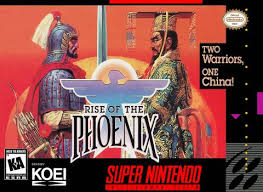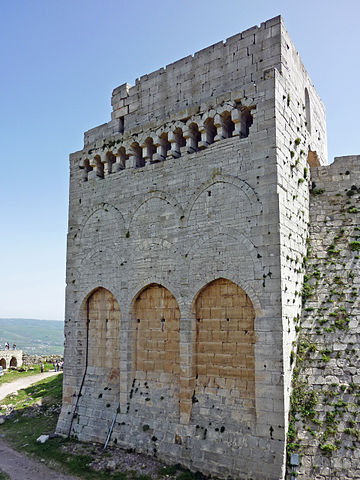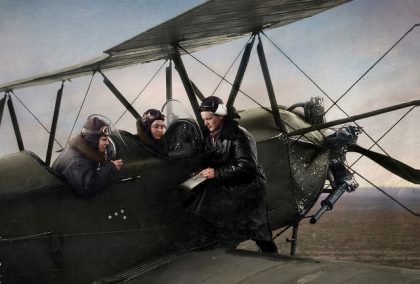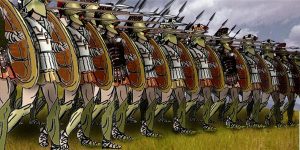Works of fantasy are often most compelling for what they have to say about our world. Despite being set in entirely imaginary worlds, some of my favourite fantasy stories have a close relationship to real historical settings and events. They’re “ripped from old headlines,” if you will.
Perhaps most famously, George R.R. Martin’s A Song of Ice and Fire series, and in particular the first novel, A Game of Thrones, has many parallels to England’s War of the Roses. Here are 5 more examples of fantasy novels with a close relation to history.
The Grace of Kings, by Ken Liu

The idea for this post came when I recently finished the first novel in Liu’s Dandelion Dynasty series. While the sequel goes in its own direction, The Grace of Kings very closely follows the Chu-Han Contention. This was the struggle for control of China that arose after the death of the First Emperor. The main plot points are virtually identical to the actual course of historical events. Also, pretty much every major character has a real-life analogue. Shout out to Gin Mazoti, the gender-flipped fantasy version of Han Xin, one of my ancestors, according to legend.
This adherence to history does not mean its fantasy aspects are mere window dressing. The gods and their interactions with mortals in Liu’s world have a lot to say about themes of destiny and finding one’s place in the world. Also impressive is how successfully Liu integrates and translates Chinese beliefs and ancient Chinese customs for Western readers. This is a great gateway read for someone to learn more about ancient Chinese history.

Tower of the King’s Daughter, by Chaz Brenchley
This novel was more inspired by a historical place, rather than events. The eponymous structure sits in modern day Syria, part of a formidable medieval castle, Krak des Chevaliers. It long stood as a bulwark for the Crusaders as they occupied the Holy Land.
Marron, the story’s protagonist, is a lowly member of the Society of Ransom, an order of warrior monks. These monks are modelled on the Knights Hospitaller, who possessed Krak des Chevaliers in its heyday. They built its most impressive fortifications. As with its real-life counterpart, the Society of Ransom is a powerful player among the Crusader States, but constantly under threat from numerous enemies that surround them.
The real-life Tower of the King’s Daughter is the oldest part of the castle and pre-dates the Crusader occupation. No one knows why it is called that, which lends an air of mystery perfect for a fantasy novel. What kills the vibe is the fact that the Tower is now a café for tourists.

Night Witches, by L.J. Adlington
As you can tell from my writing, the subject of Soviet women combat pilots during WWII is close to my heart. The Night Witches were the more famous night-bombing sisters of the fighter pilots that inspired Sparrow Squadron. While they’ve inspired many of their own novels, Adlington’s book is the first fantasy take I’ve seen.
The story takes place amid a war between two powers with opposing ideologies that closely mirror the Soviet-German conflict. The fantasy elements truly come into play when the protagonist, Rain Aranoza, discovers she has witch-like powers. Once she starts to get a handle on those powers, events take a much different course from history. It can be difficult to translate more modern history to a fantasy setting. Although I found the world-building too vague for my liking, knowing the real-life events of World War II helped to fill in the gaps.

The Ten Thousand, by Paul Kearney
Xenophon’s Anabasis seems to capture the imagination of all writers of military fantasy. The story even formed the basis of Sol Yurick’s 1965 New York gang novel, The Warriors, which was in turn made into a truly weird movie.
Although I haven’t read it, the fantasy novel that seems to hew most closely to the events of the Anabasis is Paul Kearney’s The Ten Thousand. Xenophon was a Greek mercenary of the 3rd and 4th centuries BCE. He was part of an expedition of ten thousand Greeks who fought on one side of a civil war in the Persian Empire. When their Persian sponsor was killed, along with most of their leaders, the men found themselves trapped deep in hostile territory. The Anabasis tells the story of their long, difficult journey home. With its seemingly impossible quest and moments of betrayal and brotherhood, it’s no wonder this story has inspired so many fantasy works.

Steeplejack, by A.J. Hartley
Another one from my TBR pile, I found Steeplejack intriguing because it arises from a slice of history little known to most readers. Hartley based Bar-Selehm, the steampunk urban setting, on 1870s Durban, South Africa. Like Durban’s whites, Blacks and East Indians, its populace consists of three main ethnicities: a colonial minority, an indigenous majority, and a third group of indentured servants imported by the colonists for cheap labour. The flora and fauna that surround the fantasy city are also reminiscent of the South African bush.
The social upheaval of industrialization, combined with tensions brought on by systematic racial discrimination and oppression provides a fantasy setting rich with potential.